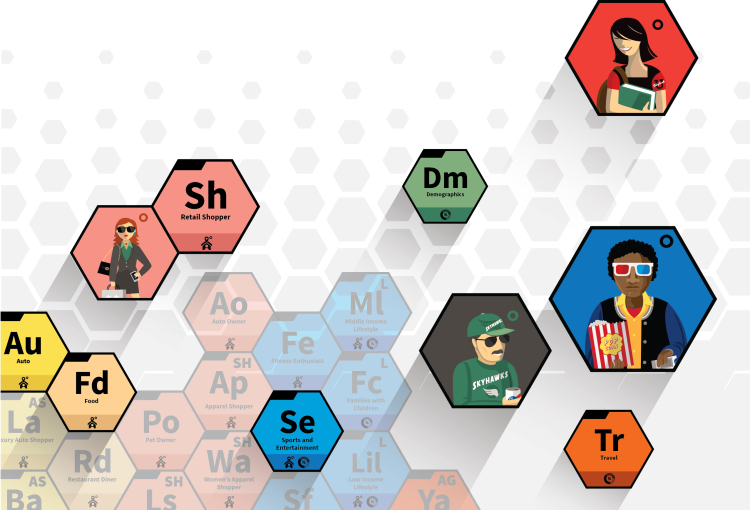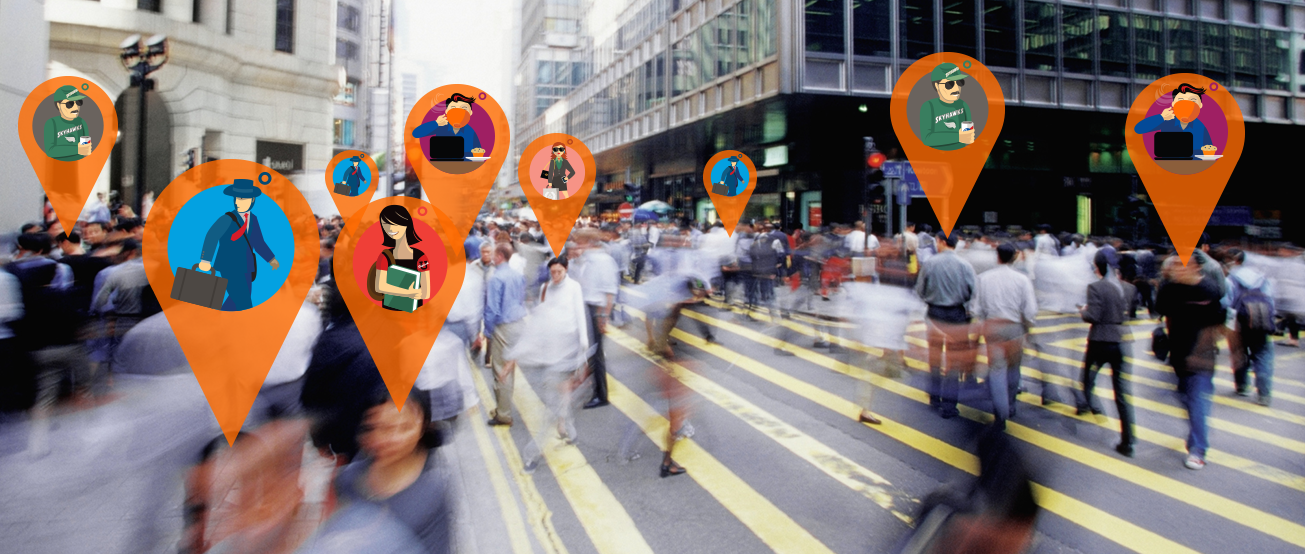Location-based marketing remains stuck in the past.
Whether you’re sending a coupon to a customer because GPS says they’re near your store, switching up the creative on your app in-store thanks to smart beacons, or serving an in-app advertisement thanks to a Wi-Fi SSID, all the most often-quoted examples work the same way.
They use a single point of location data to make a decision.
Today, Skyhook Wireless has announced the launch of three new location-based marketing solutions — Retailer Personas, Power Personas, and On-Demand Personas — as part of its independent location platform. What makes these new persona products — and Skyhook’s approach — different from the way marketers use location now?
They focus on the journey your customer takes and the understanding that comes from that data.
Skyhook’s mobile location technology processes trillions of location signals annually. Rather than focus on the current location and what intent signals it may or may not offer the marketer, advertiser, or publisher, Skyhook looks at location signals over time and applies its venue data to these broader movements. This information allows for the creation of personas, and the three new offerings are designed to identify these different types of consumer.
This, in turn, means more relevant mobile advertising for the consumer.
Importantly, it also means more accurate location, venue visit, and customer persona data for advertisers and publishers. This is good news in an industry that is expected to spend $100 billion on mobile ads worldwide in 2016, one that wastes money every day on poorly targeted messaging — a problem we’ll discuss during Mobile Summit next month.
My research shows that consumers are relatively happy allowing businesses to use location data to personalize advertising. So how do we move the needle to “completely happy” and make this type of advertising part of using a smartphone without destroying the experience?
We’re studying mobile marketing at VB Insight
Add your voice, and we’ll share the data with you
“Sending better ads to the user makes the user experience better, and makes advertisers happy to see higher engagement,” Matt Kojalo, VP of Adtech Solutions at Skyhook Wireless told me. “Publishers gain insights into who their users are, and advertisers can target and see if a user after seeing, say, an Audi ad went to an Audi dealer. Location data provides both personalization and context — two critical ingredients to great UX. Removing seemingly ‘random advertisements’ and replacing them with relevant promotions and communications also reinforces a sense of ‘this app/brand gets me’ for the user.”
The new persona products each have their particular strengths.
Retailer Personas are designed to measure attribution for campaigns associated with the 200 top retailers and brands in North America. Power Personas help identify consumers with strong brand affinity based on a high frequency of venue visits and other behaviors. On-Demand Personas allow advertisers and publishers to create and customize their target segments across more than 3,000 possible combinations.
On-Demand Personas can be created from data that includes venue visits, venue type, visit frequency, and demographic information. For example, you could build a persona that includes all consumers over the age of 17 who have visited Walmart in the past 90 days.
So a consumer who owns a car could be categorized as a Budget or Luxury Auto consumer, thanks to Skyhook’s location data. One who frequents the same types of clothing stores might be classed as a Power Women’s Apparel Shopper. Skyhook provides persona categories across auto, retail, travel, sports/entertainment, food, and general demographics.
The focus for Skyhook is not on buying or selling media, and the company says that it never aggregates, combines, shares, sells, or transfers its partners’ data to a third party. That stance means that, as a pure technology provider, it never competes with the advertisers, publishers, or adtech partners with which it works. In geographical terms, Skyhook is the Switzerland of location-based marketing.
“We charge for Persona use only when the Personas are used within one of our preferred networks on a CPM basis,” Kojalo said. “They are currently available through our partnerships, with more coming soon. In terms of generating Personas using your data, it’s very easy to integrate. We have an API, batch/bulk processing as well as a very easily integrated SDK, so companies can send us data to be ‘Personified’.”
To build a behavioral profile for a user, Skyhook requires user sample locations containing a unique device ID, a time stamp, and a location. The company’s three new Persona products are available today.
VentureBeat's mission is to be a digital town square for technical decision-makers to gain knowledge about transformative enterprise technology and transact. Learn More


